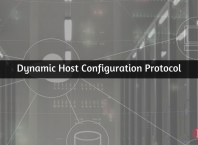Data Transfer Rate (DTR):
A data transfer rate (DTR), is the speed at which data can be transmitted between devices. This is sometimes referred to as throughput. The transfer rate of a device is often expressed in kilobits or megabits per second, abbreviated as kbps and mbps respectively. It might also be expressed in kilobytes or megabytes, or KB/sec and MB/sec. Bits are abbreviated in lower case, while bytes use upper case.
In a world ,
where programs and files are becoming ever-larger, the highest data transfer rate is often the most desirable. However, as technology moves quickly to advance the speed of many components, consumers are often faced with systems that incorporate varying specifications.
For example, RAIDs (Redundant Array of Independent Disks) consist of multiple hard drives linked together to be pooled into one large storage system. The virtual drive that results can be several hundred gigabytes. When programs are initiated or files retrieved, the data transfer rate of each drive becomes important to reach across this vast storage pool. Drives are rated by how fast they can read and write data. An Ultra ATA drive is rated at 33.3 MB/sec, while a SATA 300 has a rate of 300 MB/sec. The RAID is forced to adopt the speed of the slowest drive so as not to lose data as it travels across that disk from faster drives. For this reason, it is best that all drives in the RAID are of the same model and manufacturer, so that they will support the same data transfer rate.
It is also important to consider data transfer rates when purchasing controllers. If buying a SATA controller, for example, be sure it supports the rate of the SATA drive(s) you plan to use. A SATA controller that supports the SATA 150 specification only will slow a SATA 300 drive down to half its designed speed. A controller that supports the newest version of SATA will be backwards compatible to run slower SATA drives as well. For this reason, it is always best to buy components that support the fastest speeds possible.
Modems, cables, controllers, optical drives, printers, scanners and virtually all computerized components feature a data transfer rate. Taking this into consideration is one of the most valuable tools in choosing new components and upgrading old ones.






![[Top 10] Best ways to Earn Money Online 2023 popular ways to earn online money](https://bytizenotes.com/wp-content/uploads/2023/02/make-money-online-100x70.png)